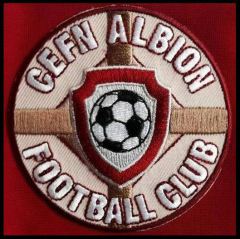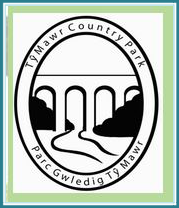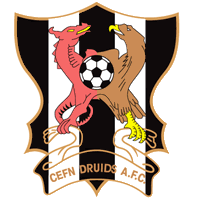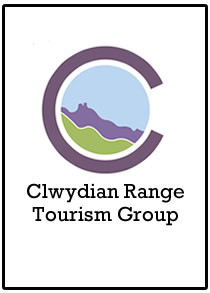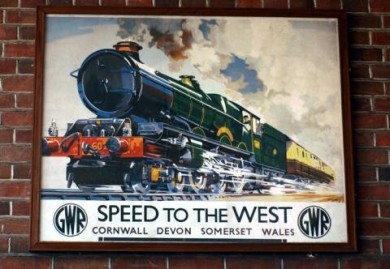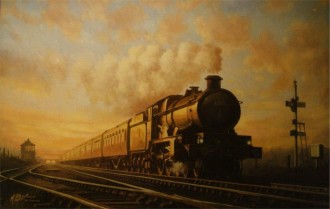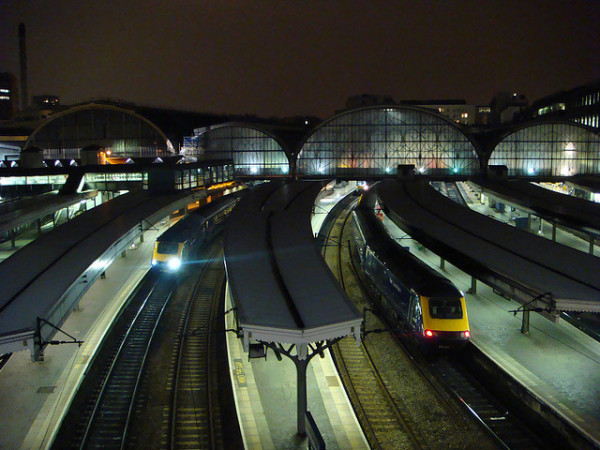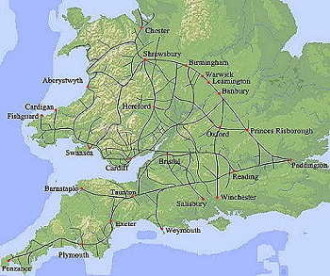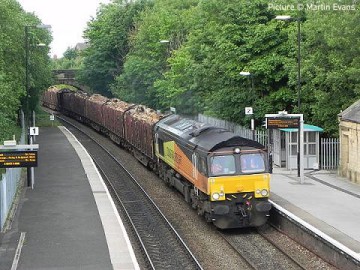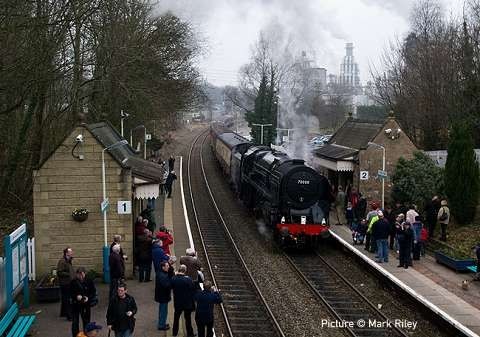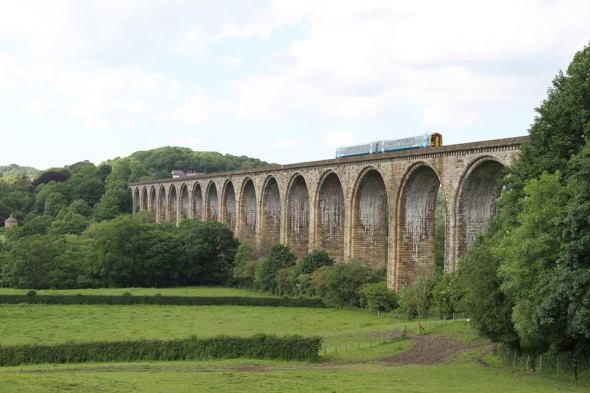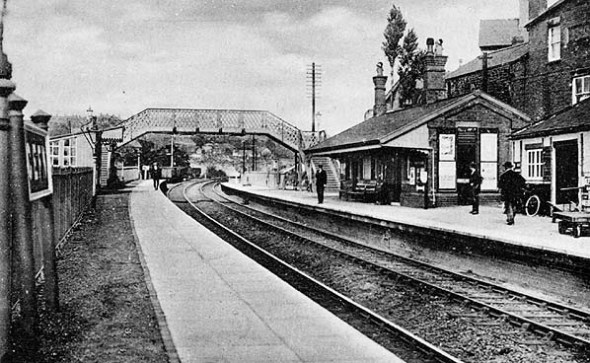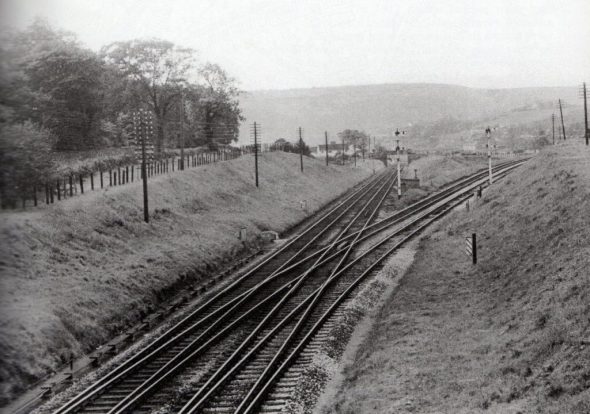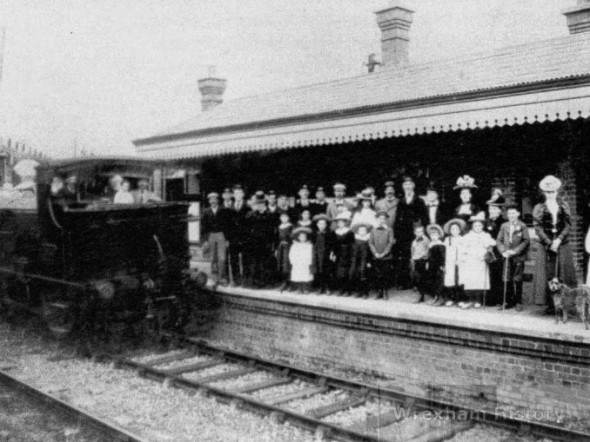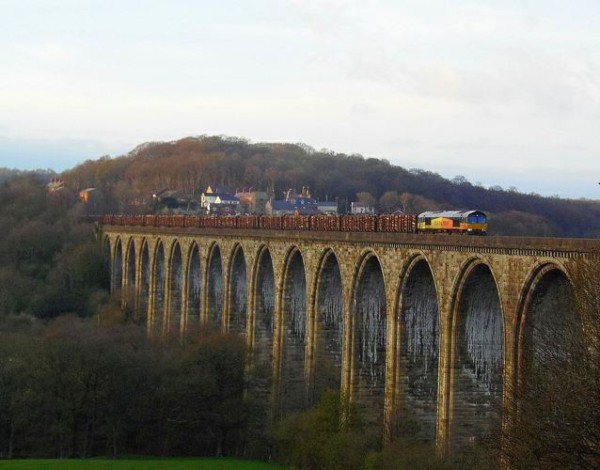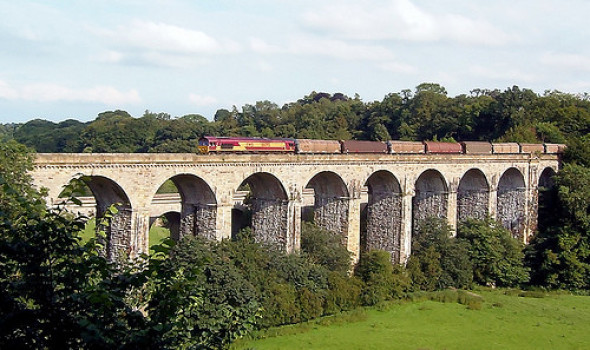The Great Western Railway (GWR) & Pontcysyllte World Heritage
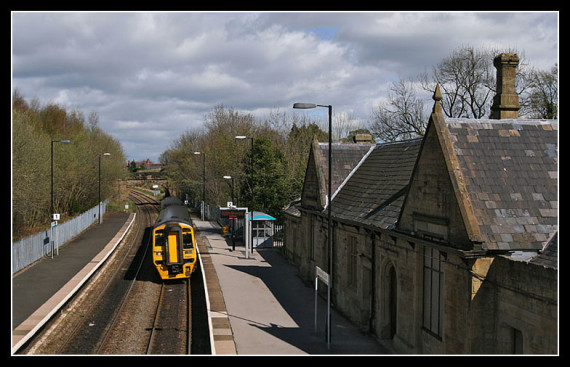 Arriva train service Ruabon Station 2012, part of the former GWR line from London to Birkenhead via Birmingham
Arriva train service Ruabon Station 2012, part of the former GWR line from London to Birkenhead via Birmingham
The PKC Group suggest that the former GWR line from London to Chester via Birmingham that is still in use today can provide an economical alternative to the 17 billion being planned for the HS2. The line running from London Paddington or Marylebone can be upgraded for mere millions as opposed to billions for the new line. Therefore the cost of upgrading our line that would not only serve as a second high speed link between Birmingham and London and provide a service for Mid and North Wales via Wrexham & Shrewsbury would be achieved at a fraction of the cost.
The Great Western Railway (GWR) was a British Railway Company founded in 1833 at a public meeting in Bristol and was incorporated by Act of Parliament in 1835. Isambard Kingdom Brunel was appointed engineer. The GWR linked London with the south-west of England and most of Wales. The GWR was the only company to keep its identity through the Railways Act of 1921until it was finally wound up at the end of 1947 when nationalised and became the Western Region of British Railways. The GWR was called by some "God's Wonderful Railway" and by others the "Great Way Round" but it was most popularly famed as the "Holiday Line".
Holidaymakers queue at Paddington station at the beginning of their journey west. When the Great Western Railway was first built, Britain had a variety of different time zones, with Bristol, for example, ten minutes ahead of London. Brunel insisted on standardised time across his network, and within ten years, the entire country was using a single time zone.
The original Great Western Main Line linked Paddinton Station in London with Temple Meads Station in Bristol via Reading, Didcot, Swindon, Chippenham and Bath. The line was eventually extended further westwards through Exeter and Plymouth to reach Penzance, the most westerly railway station in England. Swindon was also the junction for a line that ran north-westwards to Gloucester, Birmingham and on to Wolverhampton. Beyond Wolverhampton the line continued via Shrewsbury, Wrexham, Chester to Woodside Birkenhead, the most northerly Station of the GWR line. Even in the 1960’s, during the Beeching era there were still six through trains on weekdays between Birkenhead Woodside and London Paddington until electrification of the West Coast Main Line.
Passenger traffic was the main source of revenue for the GWR when it first opened but goods were also carried. It was not until the coal-mining and industrial districts of Wales and the Midlands were reached that goods traffic became significant. In 1856 the Ruabon Coal Company signed an agreement with the GWR to transport coal to London which was worth at least £40,000 each year.
Chirk Railway Station seen in 2012 with the Orient Express passing through. This is what is needed, railway lines that can be used that actually link our country together and pay for themselves. It should be local and regional lines that we are reopening to provide a real and viable service rather than chucking billions away on the world’s most expensive train, HS2.
It is clear that the number of passengers using the North East Wales section of the GWR line is increasing on a yearly basis. The former Great Western Railway line is a key…..
RMT June 2012.pdf
Adobe Acrobat document [260.3 KB]



